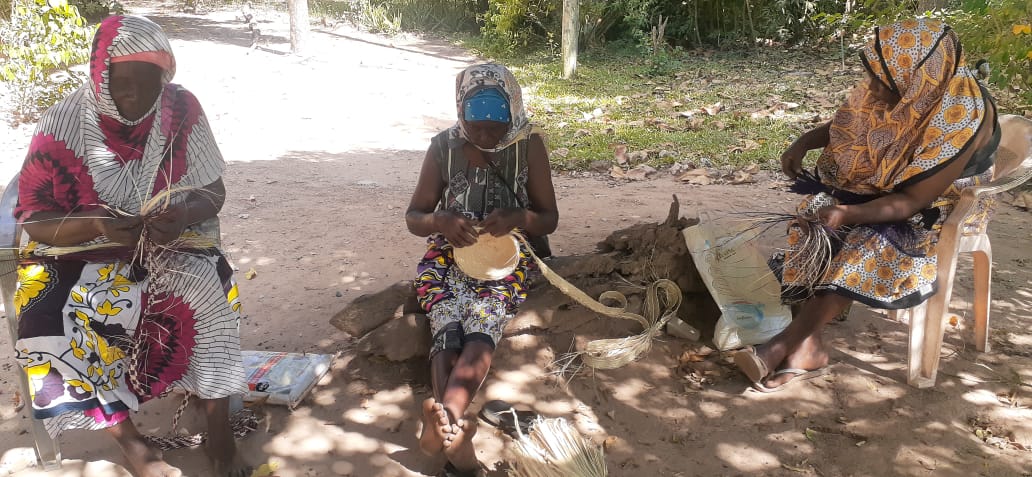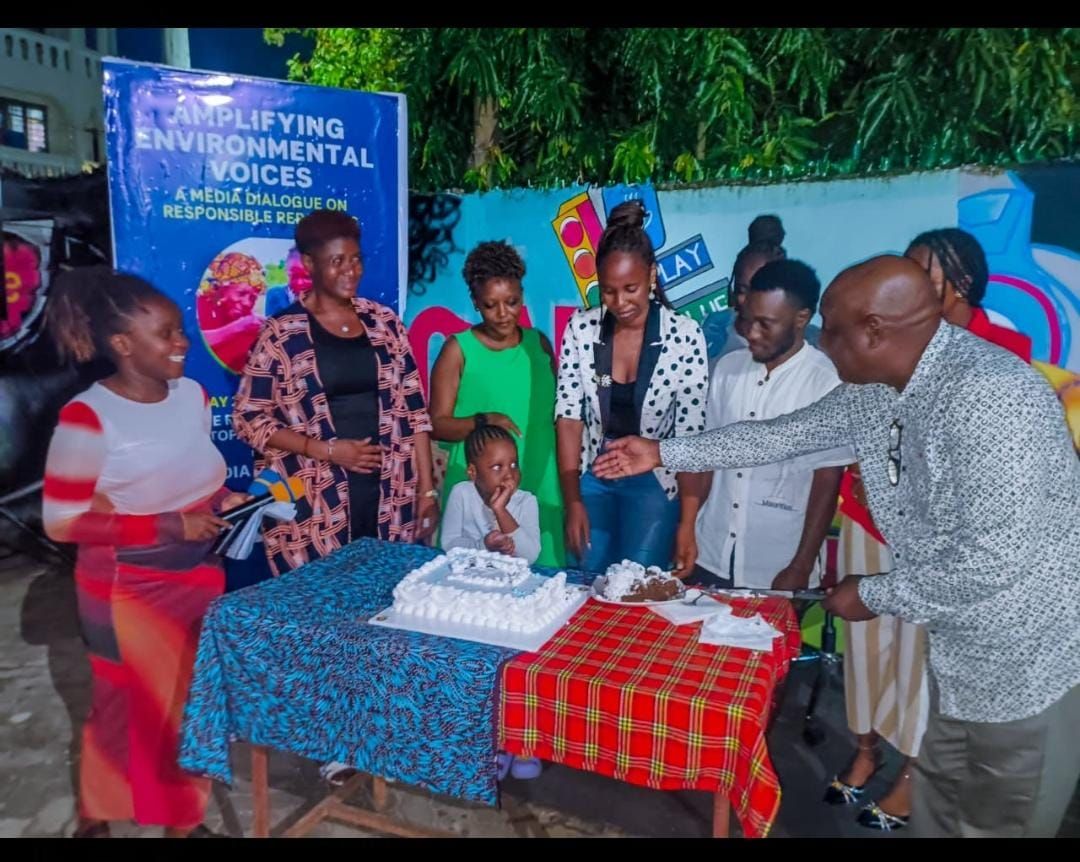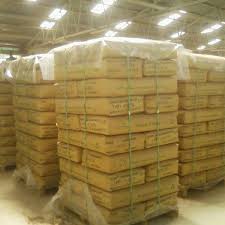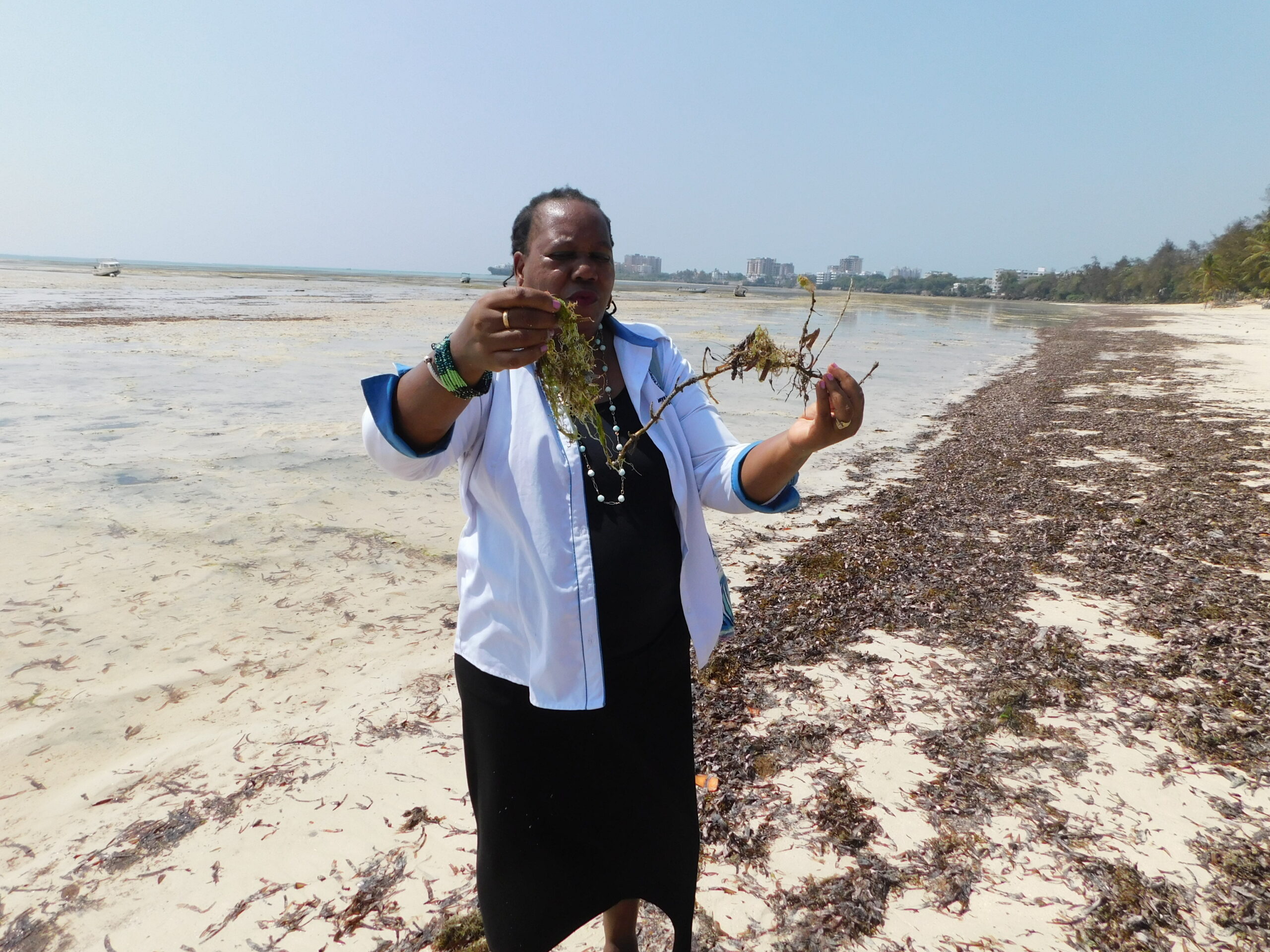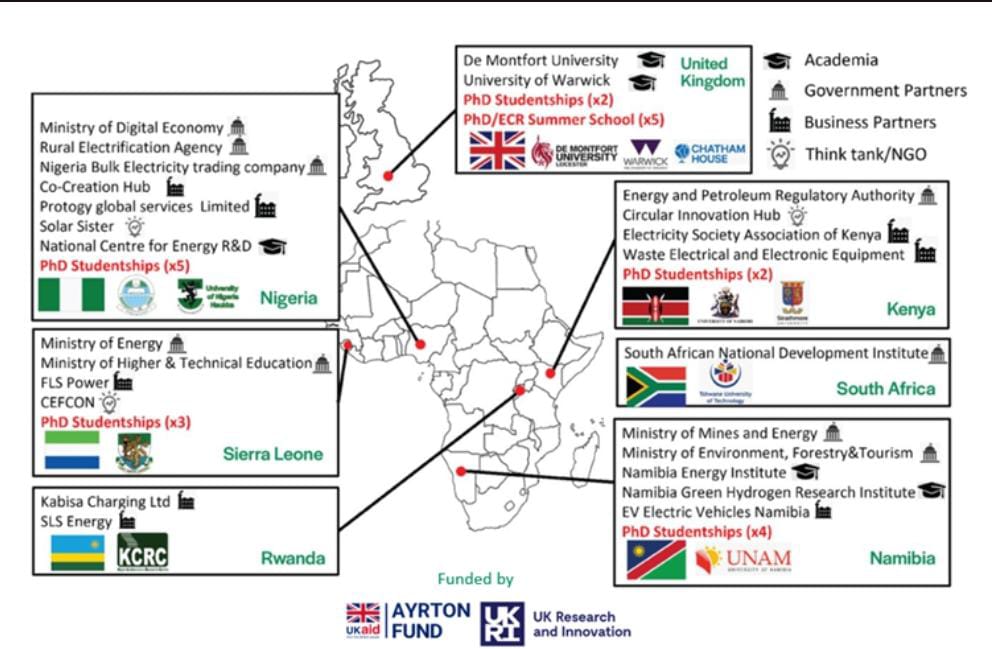Kinondo village women working on their weaving different artefacts. Online marketing facilitated with funds from the Go Blue project has seen their business thrive.
For decades, the Mijikenda elders, who are the custodians of the community’ rich cultural heritage, have singlehandedly carried the task of conservation of the sacred forests, commonly known as kayas, for posterity.
Despite the challenges, including encroachment and illegal logging in the forests, kayas have remained the rich repository of the Mijikenda culture and belief systems.
Kaya Kinondo in Kwale County, Kenya’s Coast region, the home to the Digo community, one of the nine sub tribes of the Mijikenda is taking a new trajectory to conserve the forest and the culture while creating wealth and job opportunities for the youths and women, thanks to the Go Blue Project.
Go Blue
The Kaya Kinondo Forest Conservation Group, is one of the beneficiaries of funding amounting to 19,000 Euros under the GO BLUE project. Through this initiative, the group was supposed to preserve the heritage through education and enterprise.
The Go Blue Tourism and Cultural Heritage Component Action is funded by Camões, I.P., a Portuguese Corporation, in collaboration with the Jumuiya ya Kaunti za Pwani (JKP) Economic Development Secretariat, a partnership between the European Union (EU) and the Kenyan government.
The Go Blue Kenya project is a partnership between the EU and the Government of Kenya to advance the Blue Economy Agenda through Coastal Development.
Under the umbrella of the Blue Economy, the overall objective of the programme is to unlock the potential of sea-land opportunities in coastal urban centres for sustained, inclusive and sustainable economic growth with employment impact, while conserving and sustainably using the coastal and marine environment as well as promoting effective and integrated maritime.
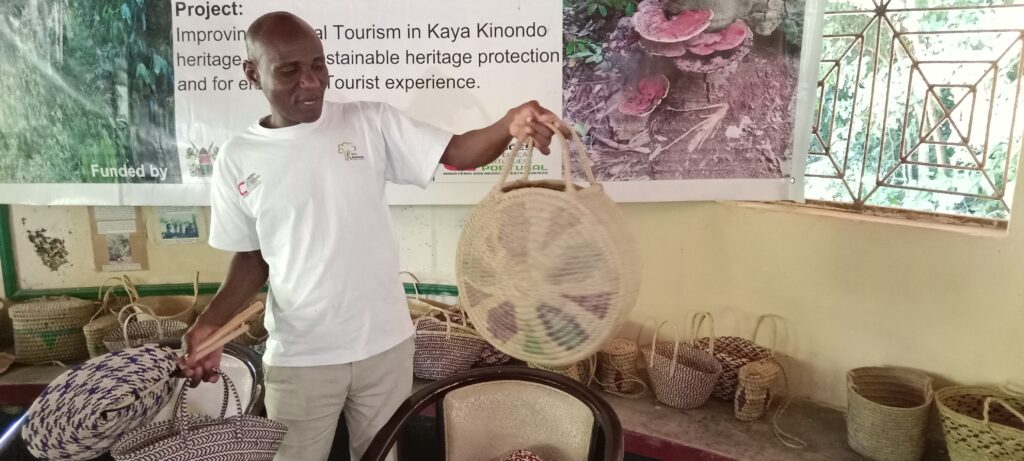
Gerald Gambo, Kaya Kinondo Forest Conservation Group Project Coordinator, said in order to bring confluence between the outside world and the sacred forest, it was important to form and register a group to play that role. It was through this group that the Go Blue project was implemented.
“The group was formed to promote cultural tourism but its major objective is to enhance conservation of Kaya Kinondo by involving the community for sustainable tourism.
“Through this initiative, the project seeks to increase the number of tourists into the forest but ensuring that the ecological wellbeing of the forest and culture are undisturbed,” said Gambo.
“The activities under the Go Blue project include enhancing the capacity of the group to market Kaya Kinondo as a cultural heritage tourist destination, produce education materials, documentaries showcasing the products that are available at Kinondo, the site itself as well as how the community is involved in cultural heritage conservation.
Through these materials, including videos, Gambo said, the idea was to provide training that would help in interpreting the forest, targeting the youths to promote and preserve heritage.
It will also be a source of revenue for the group targeting school going children to learn more about their culture by watching specially developed education videos.
“It was also supposed to enhance the marketing of the products through the internet and information, education and communication (IEC) materials to be used for training of the young people to ensure sustainability and proper interpretation of the forest,” he said adding that through the online presence they will be able to attract more visitors.
Youth involvement

In order to ensure the sustainability of the forest, the project undertook to train youths through the materials developed on basic skills on interpreting the forest through tour guiding, guest relations, marketing and hygiene standards. The Go Blue project trained 20 youths from the villages adjacent to the Kinondo forest.
“We now have youths from the community who can now tell the story about the forest, interpret every aspect of the culture and other areas on forest management and that means we have local manpower.
“All along, Kaya has been managed by elders both male and female who have been actively involved in the activities of the forest but a lot is happening and some of the elders who are the custodian of the cultural heritage are passing on. When they die, the information they have about the sacred forest goes with them.
“We therefore saw it prudent to take the youth and put them together with the elders to see and learn from them the traditions so that, they too will be able to pass on the information for future generations. This also means the forest will still be in safe hands because it will be conserved for posterity,” said Gambo.
Abdalla Khamis, a youth from Chale village who used to make vents heard about the training and saw an opportunity to gain some skills while at the same time learn more about his heritage.
“I have benefitted a lot from this training and the work that I do as a tour guide in the Kinondo forest. Apart from the money that I earn, the skills I have acquired is for my personal growth.
“I also meet so many people here, something that expands my network. I have also gained a lot in understanding my cultural heritage and the need to conserve it for posterity,” said Khamis.
Another youth, Salim Mwatayari from Mgwani village said the conservation project has had a great impact on his social and economic wellbeing.
From a labourer working in construction sites just after finishing secondary school, the training has opened doors for him. The training, he said, has given him a new understanding and meaning to the forest.
“Culture to me was just a normal thing and never took it serious but after the training I got to appreciate the value of cash in the life of a human being. It is therefore important to safeguard it,” said Mwatayari who is also employed at Kaya Kinondo.
Women
The project also had activities that directly targeted women, one of them being improving and adding value to handcrafts and other artefacts made by women in the villages.
According to Gambo, over 50 women have been involved in basketry and other crafts that they bring to the Kinondo shop to be sold to tourists.
Unlike the traditional way of confining the women to roles that the society has confined them to, such as weaving, cooking and dancing for visitors, Kinondo women are doing much more.
They are now involved in value addition and also using their artistry to interpret and explain some of their culture.
Gambo said women are also involved in decision making in the project as part of the beneficiaries.
Sanaa Bambanya from Chale village is one of the women working with the Kaya Kinondo Forest Conservation Group as a cashier at the same time selling handcrafts made by the women from the community.
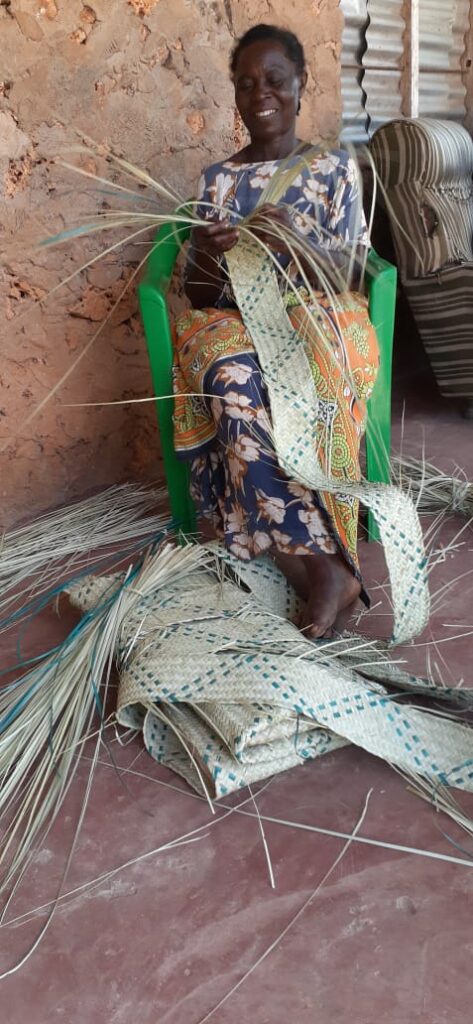
The artefacts are made in the villages then brought to the shop at Kinondo for sale to tourists.
“The handcrafts are sold according to their size and the material used and the prices can range from Ksh500 to Ksh4,000. This is a job for women in the villages and looking for the market there.
“However, when they were involved in the Kaya Kinondo project, they were asked to continue with their work but should also use it as a market for their products. Kaya Kinondo project became the umbrella for the various community groups. There are about nine women groups in the villages,” she explained.
What people may not understand is that everything they do in terms of art and basketry has a deeper cultural connotation.
“The baskets tell about our way of life and for a long time when people were using plastic bags, we stuck to our traditional way of carrying items, which is also environmental friendly because we use local materials obtained from our land.
“Our culture is replete with colours and embroidery and when you look at the baskets and mats, you will appreciate how beauty is defined through our works of art. Traditionally, we use mats while eating and even when holding meetings and all that is perpetuated through what we do,” she said.
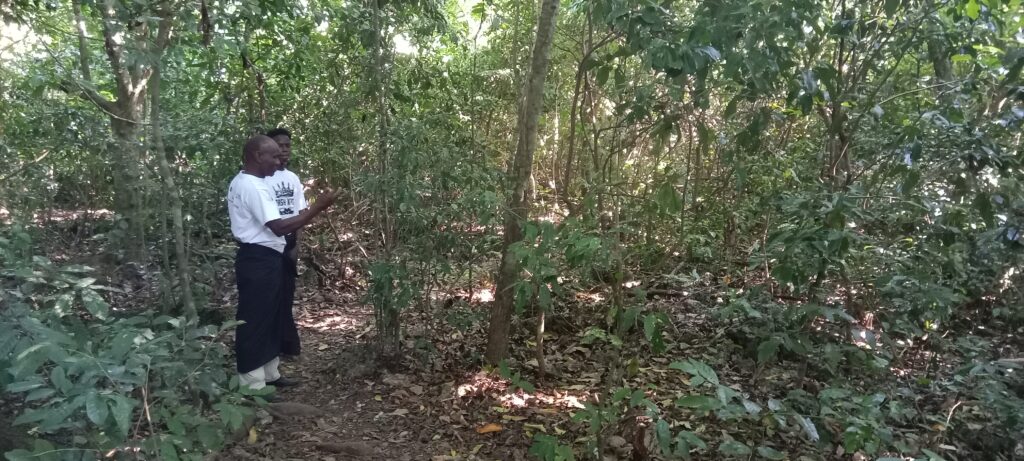
Sanaa said they have realized several benefits from the involvement of women in the project because apart from the handcrafts, the women are also involved in cooking traditional dishes for the visitors.
“The women are involved in so many activities including performing traditional dances for the guests. They are also actively involved in environmental conservation especially in establishing nurseries for indigenous trees which they sell.
“Depending on the number and type of guests who come to our shop, on average we can earn about Ksh30,000 per month just from handcrafts,” said Sanaa.
She said their desire is to get a bigger space for their products and another outlet elsewhere so that women can deliver and earn more from their work.
Gambo said they have witnessed an increase in the number of tourists and the advantage we have is that our area is linked directly to the larger Diani tourist circuit and that means we get visitors from every corner of the globe. Kenyans too are our biggest clientele especially groups coming to the coast for tours and education.
Through this project, Gambo said, they have developed shot documentaries that showcase the culture of the people that is depicted through the forest.
Previously, before the Go Blue project we were getting less than 100 visitors but the numbers have gone up to over 200 in a good month. Foreign tourists are charged about US$10 while locals are charged Ksh500. Students pay Ksh200.
FACT SHEET
The Kinondo Kaya forest is the original home of the Digo community where the elders are the custodians of the culture and traditions. It is here where conservation of the biodiversity is deeply rooted in culture.
According to floristic survey done in 1987, the forest has old trees that date back 600 years.
Information from Kaya Kinondo Forest Conservation Group website, the Kaya Kinondo Sacred Forest is rich in plant species that occur within the forest site. 187 types have been recorded and are of varying ecological importance and status (185 of these are indigenous species and 2 alien species) these include 3 rare and possibly endemic species.
It is rich in indigenous flora with some of the oldest and tallest trees and a host of fauna comprising primate species such as colobus monkeys, bush babies, yellow baboons, sykes monkey and vervet Monkey.
It is these attributes that have turned Kaya Kinondo into a bubbling tourist destination that attracts local and international visitors who patronize the area to enjoy the aesthetic cultural heritage in the Diani tourist circuit.

